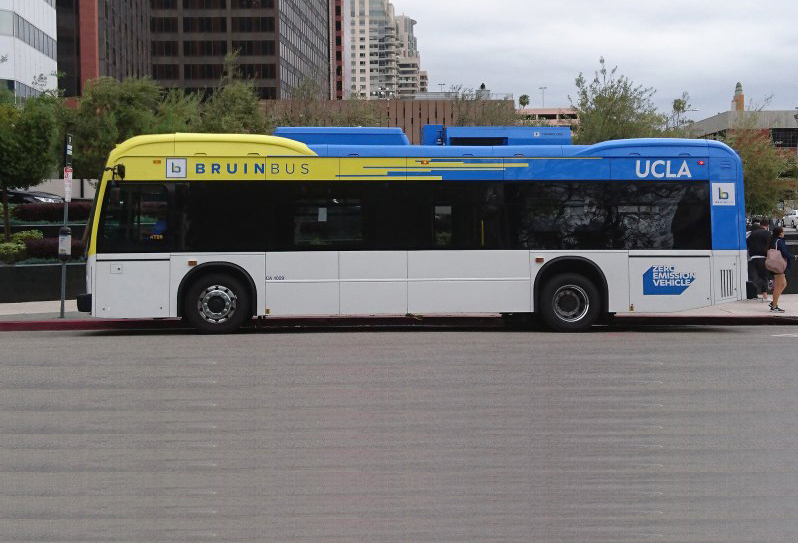Join us at the virtual Shared Mobility Summit on May 5-6 for powerful plenary speakers, hyper-relevant sessions, small-group discussions, a virtual Startup Spotlight, a virtual expo, and a hosted reception. We’ll address how transit and shared mobility can respond and recover from COVID-19 and work for everyone. REGISTER TODAY.
The coronavirus has been devastating to public transportation ridership, but buses aren't being hit nearly has hard as trains — a finding that highlights the urgent need to push more resources to keep bus riders safe, now and going forward.
In a surprising number of cities, local bus networks have been able to hold onto half or more of their usual ridership — a large share when compared to rail systems, which have experienced far more precipitous drops. Though the data is still rolling in, the Eno Center for Transportation recently went to the trouble of compiling local news reports from around the country that highlighted public transportation systems' worst single-day declines, and then contrasted those reports by mode. We compiled the following chart based on their round up.
And yes: that is a 97-percent drop in Chicago and San Francisco...

As countless media outlets have reported by now, the nation's rail systems are in freefall, with both regional commuter systems like New York's Metro-North and more localized heavy rail systems like Bay Area Rapid Transit and the New York City subway showing declines of 90 percent or more.
But bus systems are largely holding up better. Traditional, heavily-localized bus networks, like those in St. Louis, Mo., and the Petersburg region surrounding Richmond, Va., are running at about two-thirds of their normal passenger load — a tumble, to be sure, but a very different problem to solve than a 95-percent ridership apocalypse on New York's Metro North.
The worst declines Eno Center found among bus providers fell squarely on the shoulders of big, regional bus systems that specialize in express commuter services, like Southeast Michigan's SMART bus and Spokane, Wa.'s Network. (The weird light blue column represents all of Connecticut's bus systems, both localized and express; it doesn't fit as neatly into this chart, but it's still fascinating, so we decided to include it.)
There are two simple ways to interpret this data, and they're not mutually exclusive:
One: People in our society who have no choice but to use public transportation, despite CDC advisements, are disproportionately using the same mode they've always relied on: the humble bus.
As the Eno Center's Robert Puentes points out, the local bus has long been the way most poor Americans get around on transit, especially if they work in essential professions. Express service buses and all forms of rail, meanwhile, were more popular among wealthier riders pre-corona, and those riders have largely abandoned their preferred modes since the lockdowns began. And since income is often tightly correlated with race, it shouldn't surprise us that the racial balance of transit riders has shifted since the pandemic descended as well: a recent survey found that only 22 percent of COVID-19-era transit riders are white, compared to 40 percent normally.
But here's the other way to look at it: Despite a historic public health emergency, bus workers are still showing up, doing their best, and getting a whole lot of people to the places they need to go. And that's despite the fact that the bus has long been the worst-funded, most-stigmatized segment of our public transportation system — and the fact that every aspect of the American transportation culture incentivizes driving over any form of public transit.
If bus ridership stays strong (at least compared to trains), local systems will clearly need more resources to keep bus riders safe. All of the following — cutting fares or allowing free, rear-door boarding; supplying all drivers and passengers with protective equipment like masks; increased cleanings; hazard pay and comprehensive healthcare for all workers; and increasing the frequency of service to reduce crowding on the most popular routes — is going to cost money, but we shouldn't hesitate to spend it.
But the preponderance of bus riders it also points to a need for a cultural shift in mindset: from an image of the bus as the transportation mode of last resort, to an image of the bus as the mode that kept our society moving when the rest of the world had come to a standstill.






